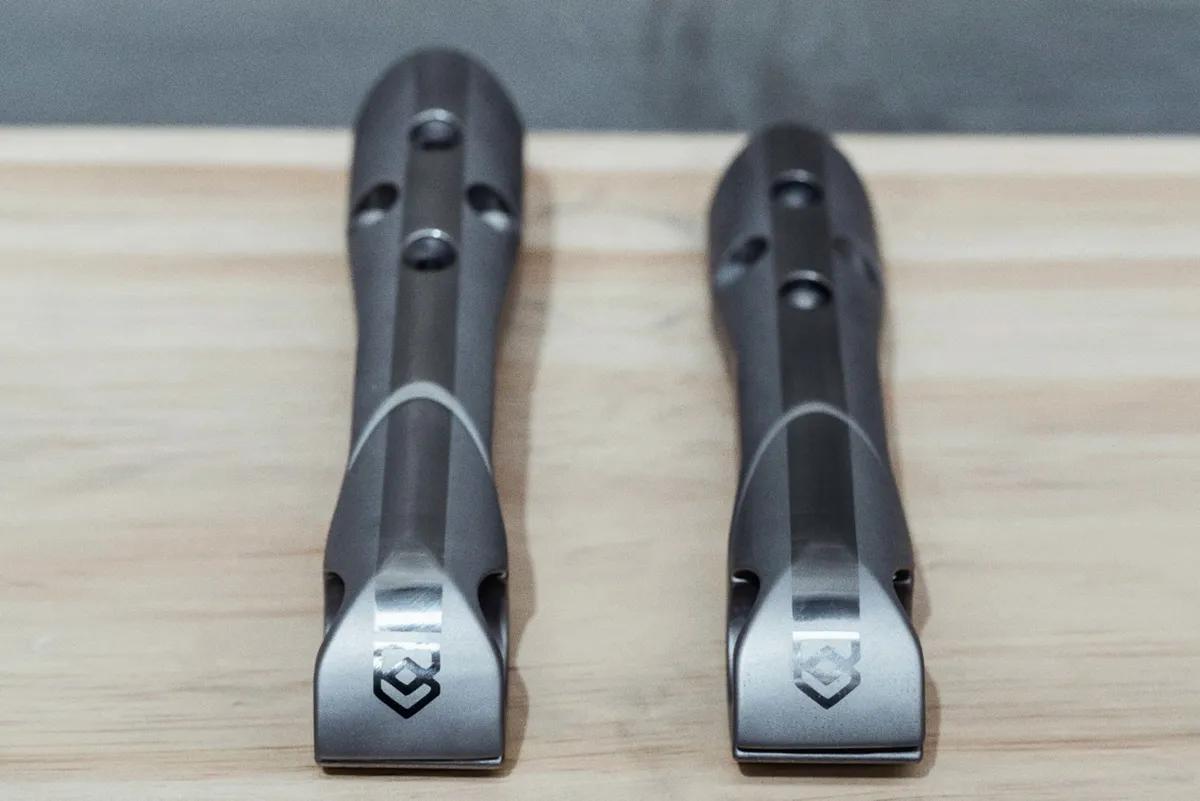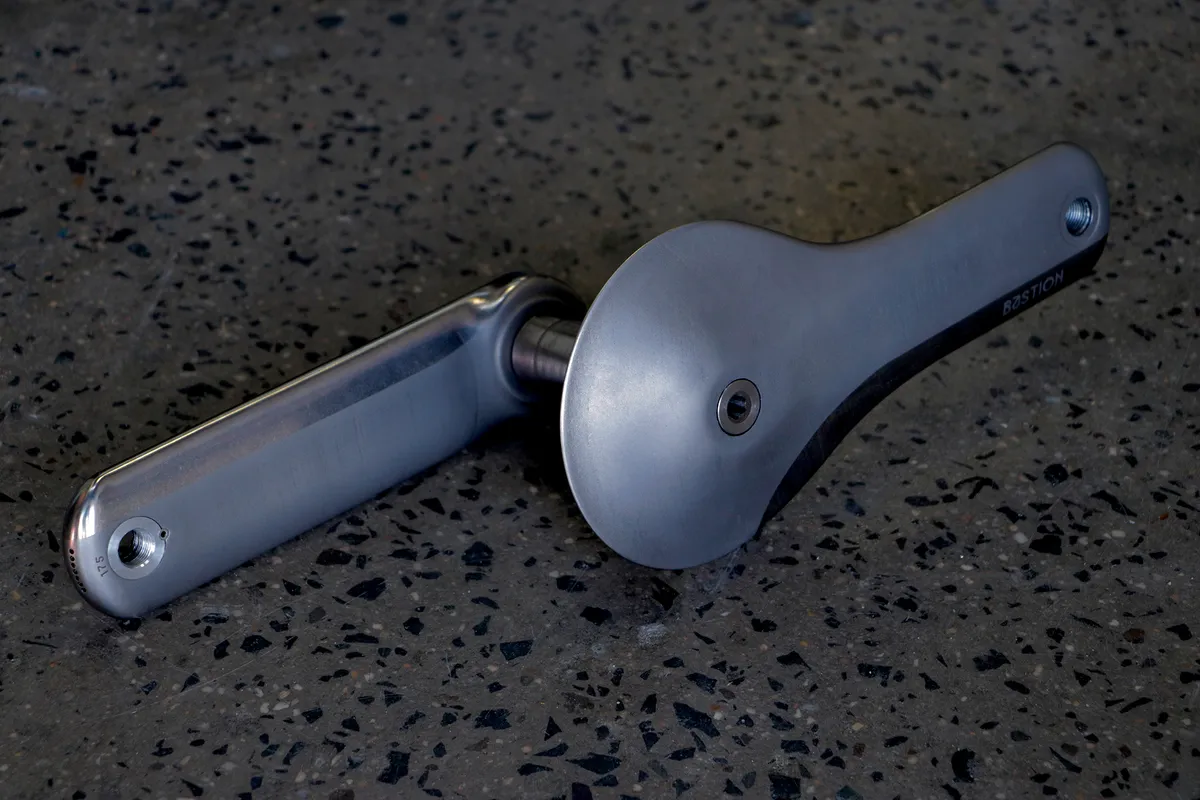Bastion Cycles has released a stem that costs AU$2,040 (that’s £1,086.69/$1,399.08 at the time of writing), plus local taxes and shipping – making it, as far as we can tell, the most expensive stem in the world.
Designed specifically for the Argon 18 Electron Pro track frame, the Argon 18 Sprint Stem is 3D-printed to a custom specification using Ti6Al4V (grade 5) titanium alloy. Bastion says there are several stack heights available, and it can be made up to 160mm in length with between +17/-17 degrees of rise or drop.
Created in collaboration with Cycling Australia, it forms part of a suite of 3D-printed components made by Bastion, all intended to be used by the Australian national track cycling team at the 2020 Tokyo Olympic Games.
The other parts comprise of a titanium track crank, which Bastion claims is “aerodynamically superior with class leading stiffness” and a wildly shaped, integrated titanium ‘double-drop’ handlebar, which offers “several riding positions that improve control and stability as well as aerodynamic performance”.
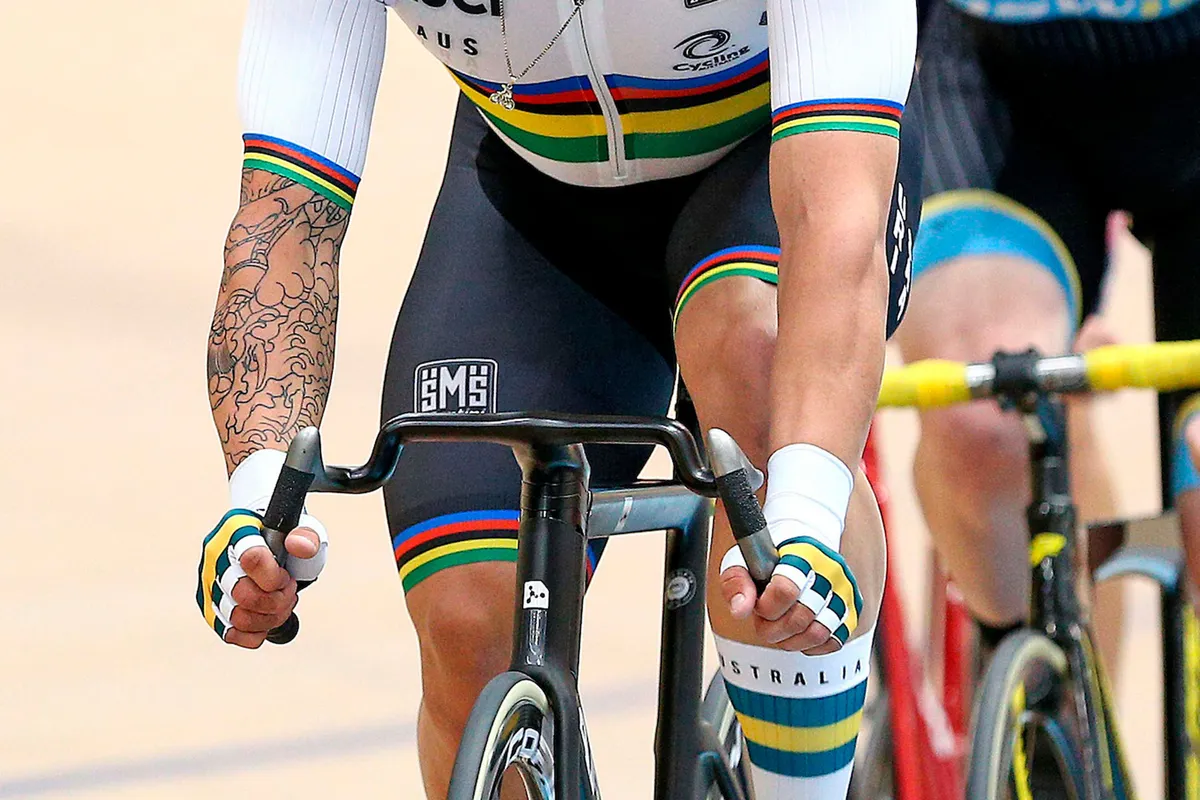
Like the Sprint Stem, both the cranks and handlebars are customisable. The cranks are available in lengths from 160mm to 180mm, and the handlebars can be individually specced for width, stem length and angle.
Bastion, a boutique Australian brand and an early innovator in 3D printing for bicycles, says its “innovative structural designs incorporate variable wall thickness and an internal structural lattice” and that this “creates metallic structures that out-perform composites in strength-to-weight ratio”.
We don’t just have to take Bastion’s word for it either because the recently announced Hope/Lotus HB.T track bike, created for the Great Britain track cycling team, also uses a number of 3D-printed parts. Is the dominance of composites over metal at the top of the sport close to an end?
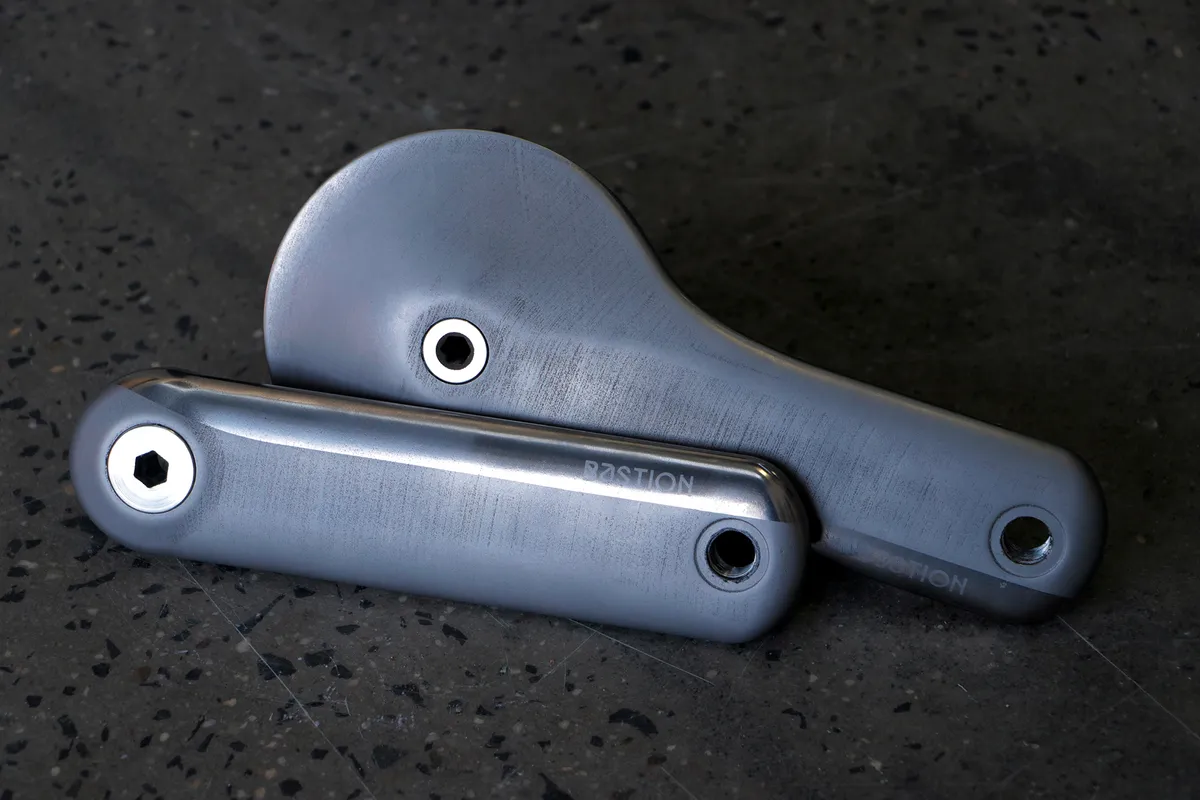
Why is it so expensive and how can I get one?
The Argon 18 Sprint Stem is available to order now from Bastion, with a lead time of six to eight weeks. Bastion says the cranks and handlebars will be available to order from 1 January 2020, as per UCI regulations.
Hope has also said that the HB.T frame and disc wheels will be available from 1 January 2020. Pricing is still to be announced, but if you extrapolate out from a 3D-printed stem to an entire frame made from a mixture of high-modulus carbon fibre and 3D-printed titanium parts… Let’s just say we think it’s going to be very expensive.
As for why it costs so much, well clearly these parts are all using some seriously cutting-edge tech.
Also, these are really niche products – they’re not going to sell thousands of these parts, so in order to make them financially viable they’re going to have to be pricey.
But there’s also article 1.3.006 of the UCI technical regulations, which states that all “items of equipment must be commercially available in order to be used in cycling events.” Additionally, the UCI now mandates that the retail prices of all equipment must be published, and can’t be so extortionate that they would essentially be unaffordable, or beyond a “reasonable market value” for the product.
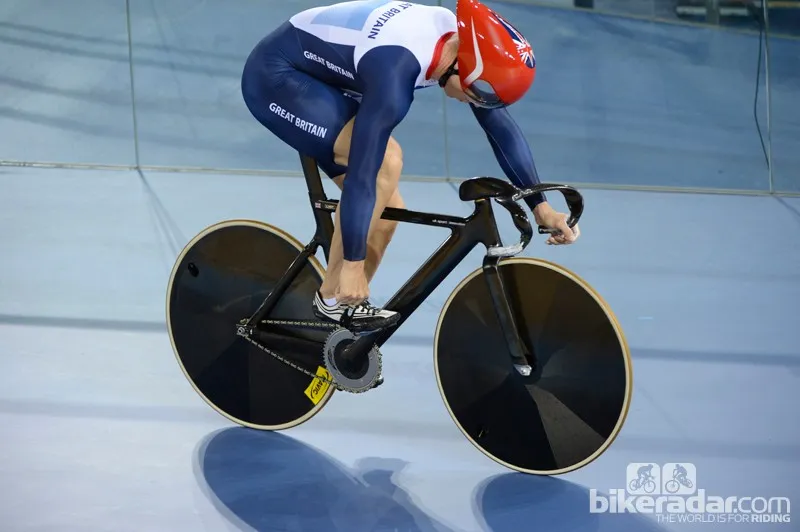
The last part of that rule is clearly open to rather wide interpretation, so we have to wonder whether the expense is partly to put off competitors from purchasing these products.
This increased transparency around kit and pricing is refreshing though, because the UCI rules governing the commercial availability of equipment used to be much looser.
British Cycling’s iconic UK Sport Innovation track and road bikes, plus a range of components and helmets, were previously listed for sale on the UK Sport Cycling page, with a helpful ‘price on application’ note, but whether anyone was able to actually purchase anything remains a bit of a mystery.

